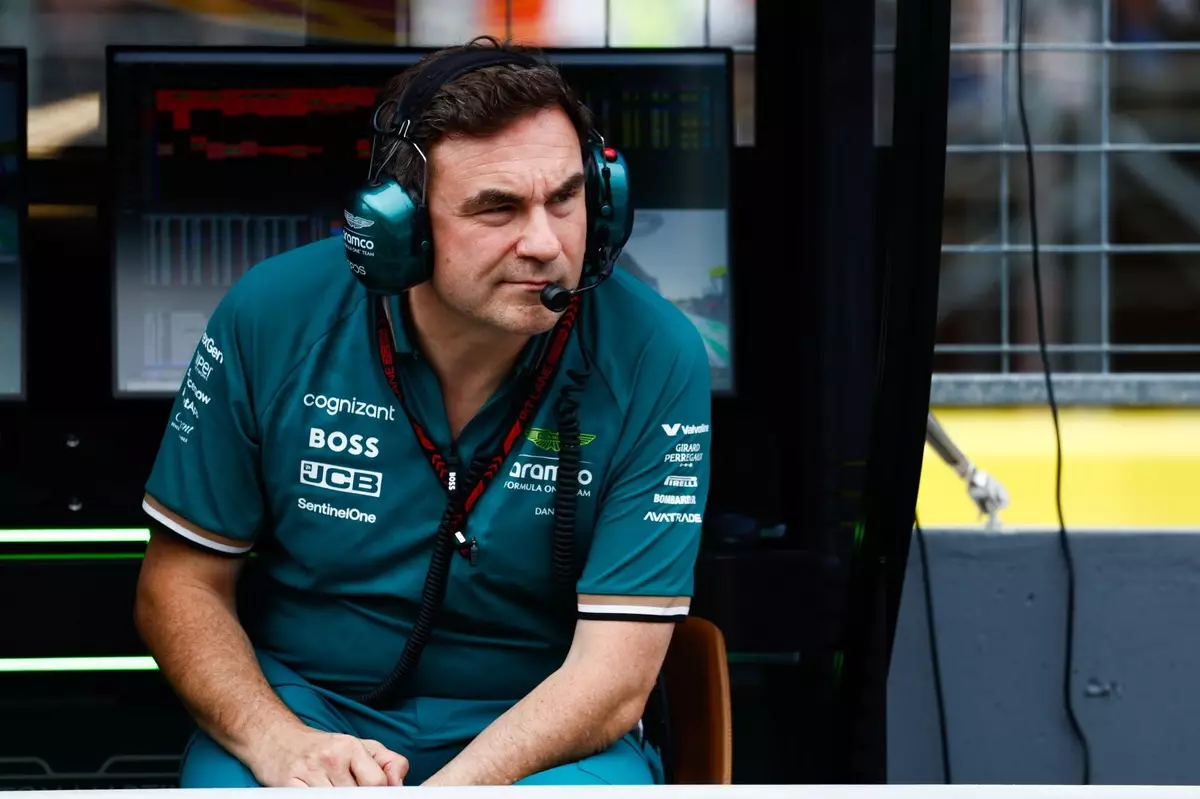The world of Formula 1 is as dynamic as the cars that race on its circuits. Strategy, engineering talent, and technological advancements coalesce to determine success. One of the latest shifts in this environment is the announcement that Dan Fallows has stepped down as the technical director of the Aston Martin Formula 1 team. This move, occurring amid a phase of transition and re-evaluation for the Silverstone squad, has significant implications for the team’s future trajectory.
Dan Fallows joined Aston Martin in April 2022 after a notable tenure at Red Bull Racing, where he advanced through the ranks to become Chief Engineer of Aerodynamics. Such a background positioned him as a promising figure when he took on the role of technical director for Aston Martin. Initially, his influence materialized in a remarkable growth trajectory for the team, as evidenced by securing eight podium finishes during the 2023 season, largely thanks to the driving prowess of Fernando Alonso in the AMR23. However, that early success fell short of long-term stability, as competing teams rapidly closed the gap in performance.
The sharp decline in form for Aston Martin later during the season resulted in the team stagnating in fifth place in the constructors’ standings and struggling to keep up with the evolving technical demands of the sport. This scenario laid the groundwork for a radical reassessment of its technical leadership structure, highlighting the inherent volatility within Formula 1 teams.
The decision for Fallows to step down, which the team announced with immediate effect, reflects broader strategic challenges facing Aston Martin. The failure to effectively develop the AMR24 demonstrates that even seasoned engineers can encounter obstacles when attempting to instill competitive advancements within a strategic framework. The team’s inability to sustain its initial momentum led to the conclusion that a leadership change might provide fresh insights and innovative approaches to combat the rising competition.
In his parting statement, Fallows expressed gratitude for the opportunity to direct the technical team, indicating a sense of optimism for the future while recognizing the necessity of change. Comments from Aston Martin’s Group CEO, Cowell, reiterated this sentiment, acknowledging Fallows‘ contributions while emphasizing the need for ongoing evolution within the technical team.
As Aston Martin scrambles to reinvigorate its performance and regain its competitive edge, the team faces important decisions moving forward. With heavyweights like legendary Red Bull designer Adrian Newey joining the team in early 2024 and long-time Ferrari veteran Enrico Cardile slated to join in 2025, the groundwork is being laid for a potentially transformative era.
However, the immediate question looms: will Fallows be replaced directly, or will the existing technical leadership absorb his responsibilities? Currently, the team will rely on deputy technical director Eric Blandin and Executive Director Bob Bell to navigate this transitional period—an interim measure that may impact operational effectiveness. Without a clear successor in place, the unfolding months prior to Newey and Cardile’s arrival will be a crucial testing ground for the existing team structure.
Aston Martin’s journey is indicative of the broader landscape in Formula 1, where talent retention, strategic hiring, and organizational change are not merely beneficial, but often necessary for survival. The team’s recent investment in its new headquarters near the Silverstone Circuit, complete with a state-of-the-art wind tunnel, signifies an ambition to bolster its technological prowess and enhance its competitive standing.
Successful teams in Formula 1 understand that maintaining momentum requires relentless innovation and adaptation. With the exit of Fallows, Aston Martin finds itself in a critical period of introspection and restructuring. If they can harness the momentum created by new appointments and integrate a cohesive strategy, they may yet reestablish themselves as a force to be reckoned with on the Grand Prix circuit.
Just as in racing, the path forward is fraught with challenges, but one thing remains certain: adaptation and evolution are not optional, but essential to thrive in the demanding world of Formula 1. The true test now lies in how effectively Aston Martin can utilize its forthcoming leadership changes to turn the tide of its competitive fortunes.


Napsat komentář